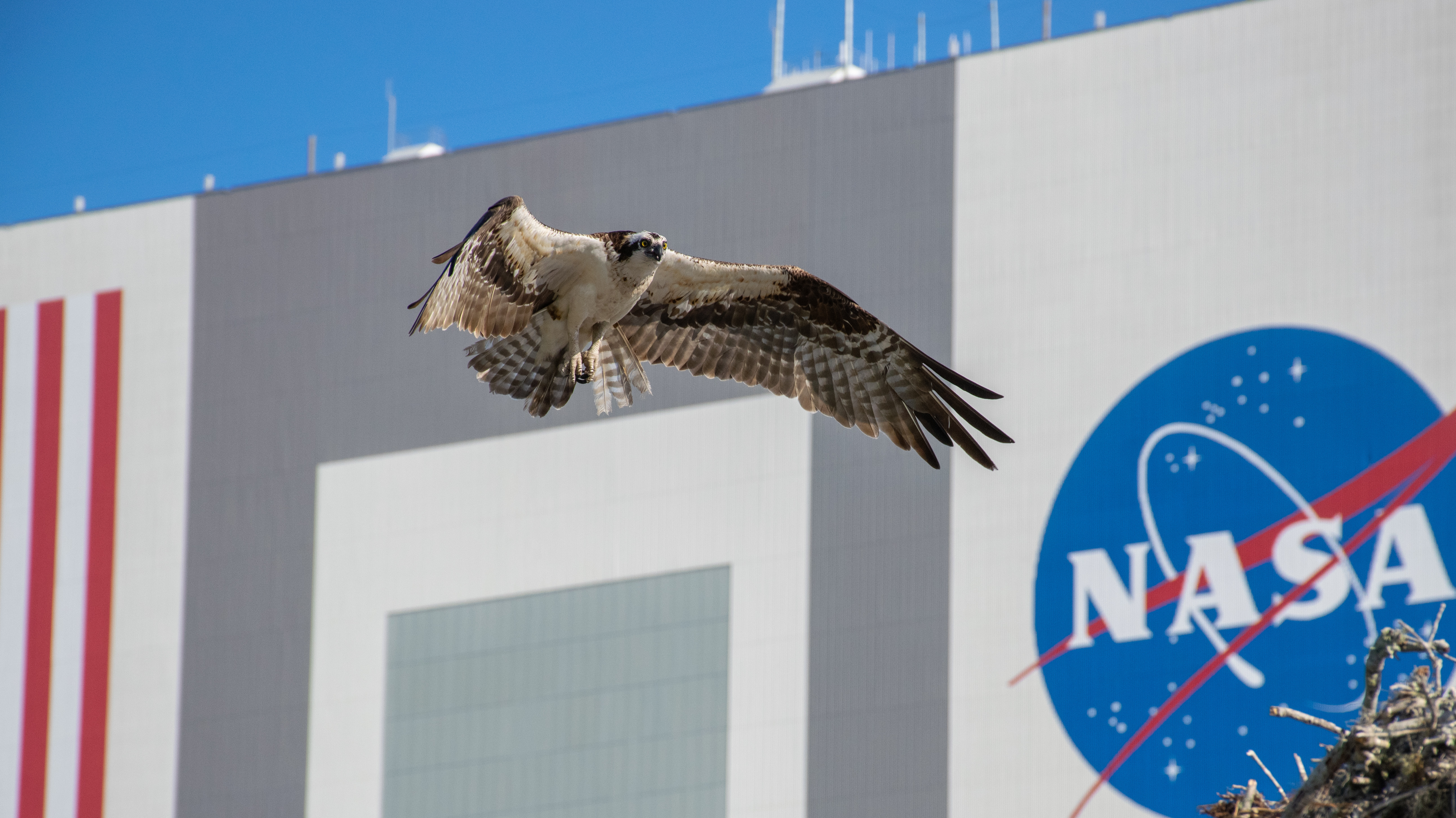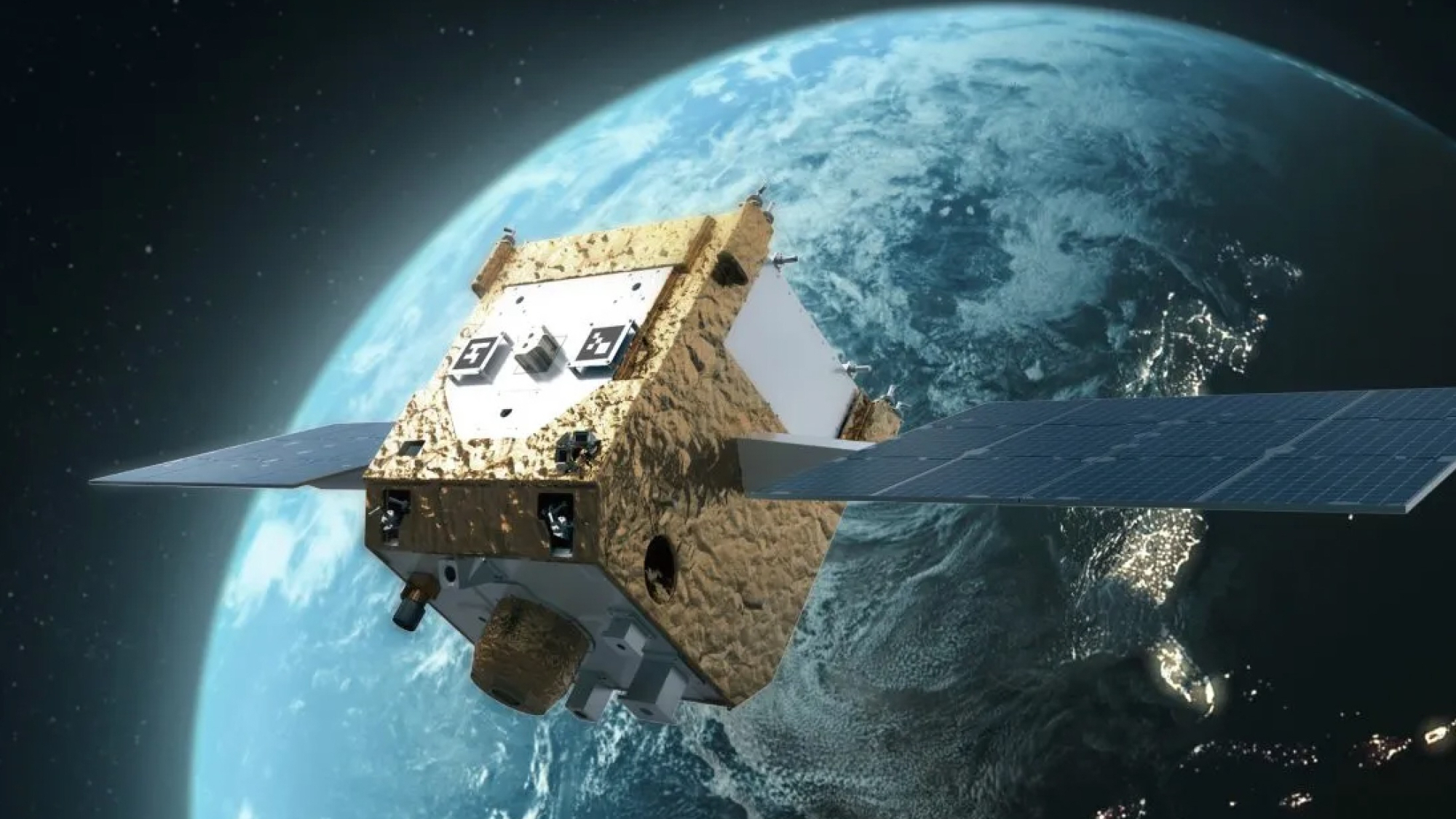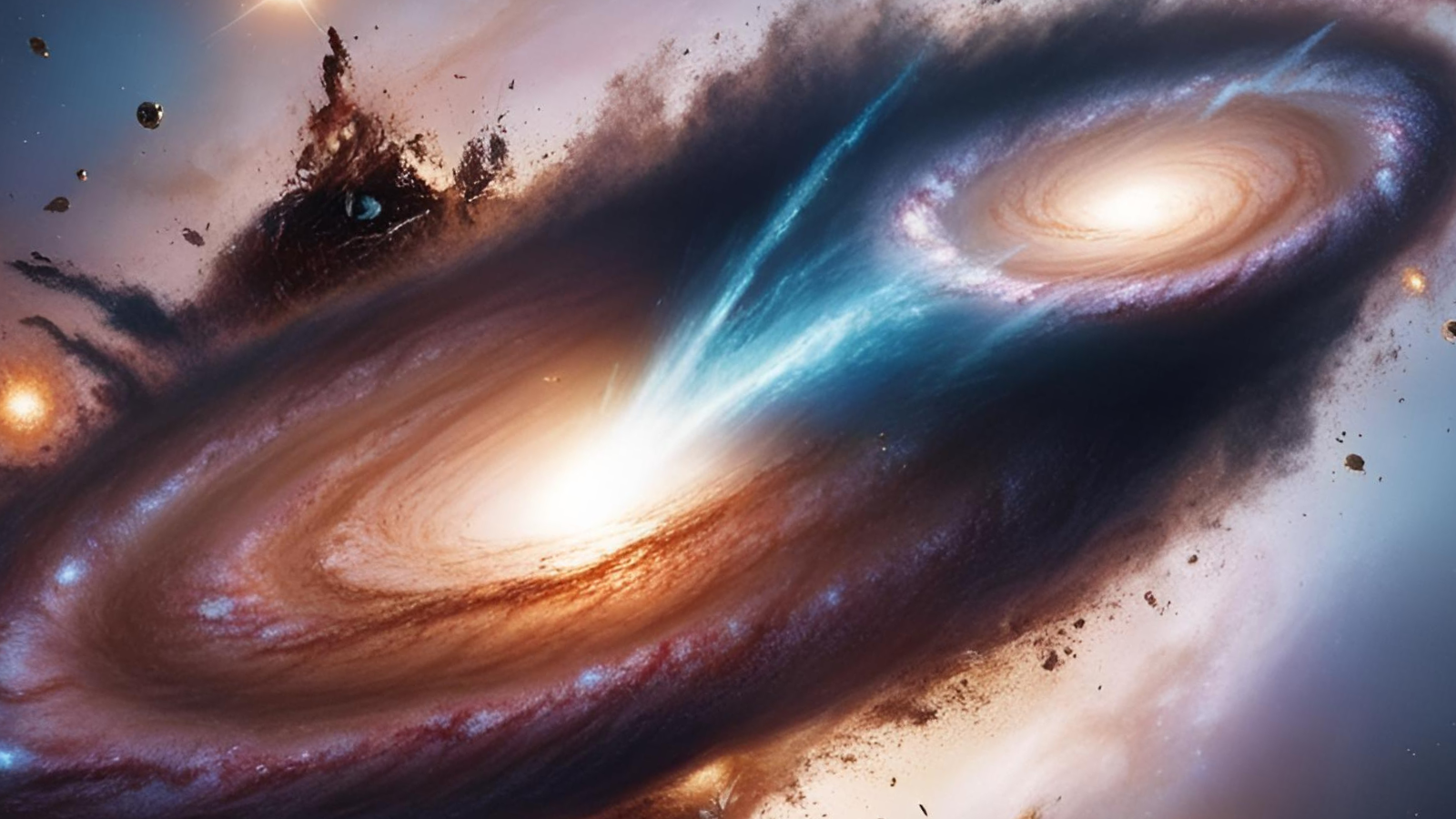Saturn's rings could be much older than scientists first thought
The idea that Saturn's rings are young seemed very strange in the context of the solar system's long evolutionary history."

Saturn's rings might not be younger than the dinosaurs as recently suggested, but nearly as old as the giant planet itself at billions of years in age, a new study says.
The age of Saturn's rings has long been controversial. Some researchers had thought the iconic features formed along with Saturn about 4.5 billion years ago from the icy rubble left in orbit around it after the birth of the solar system. Others suggested the rings are very young, perhaps originating after Saturn's gravitational pull tore apart a comet or an icy moon.
Scientists had thought one way to solve this mystery was a closer look at Saturn's rings. Over time, micrometeoroids — rocks smaller than a grain of sand hurtling through space — would have slammed into the bright icy particles making up Saturn's rings. The level of dirt seen on the rings might then serve as a sign of the rings' age.
When NASA's Cassini spacecraft reached Saturn in 2004, it discovered that Saturn's rings appeared relatively bright and clean. Subsequent analysis suggested that Saturn's rings were about 100 million to 400 million years old. In comparison, dinosaurs emerged on Earth about 230 million years ago, coming to dominate life on land until a cosmic impact brought a cataclysmic end to their reign about 65 million years ago.
However, "the idea that Saturn's rings are young seemed very strange in the context of the solar system's long evolutionary history," study lead author Ryuki Hyodo, a planetary scientist at the Institute of Science Tokyo, told Space.com. "A few million years ago is the time of the dinosaurs on Earth. This would mean that the solar system was already well-established and relatively stable."
In contrast, when Saturn formed about 4.5 billion years ago, or during the era called the Late Heavy Bombardment about 4 billion years ago, "the solar system was far more chaotic," Hyodo said. "Many large planetary bodies were still migrating and interacting, greatly increasing the chances of a significant event that could have led to the formation of Saturn's rings."
To shed light on the age of Saturn's rings, in the new study, Hyodo and his colleagues developed 3D computer models simulating crashes between micrometeoroids and the rings. These impacts typically occur at speeds of about 67,100 mph (108,000 km/h), they said.
Get the Space.com Newsletter
Breaking space news, the latest updates on rocket launches, skywatching events and more!
The researchers found these speedy collisions could generate temperatures of more than 17,540 degrees F (9,725 degrees C), leading the micrometeoroids to vaporize. This gas would then expand, cool and condense within Saturn's magnetic field, producing electrically charged ions and microscopic particles.
The simulations then revealed these charged particles mostly either collide with Saturn, escape its gravitational pull, or get dragged into the planet's atmosphere. Very little of this material appeared to pollute the rings, leaving them relatively clean, the scientists found.
"A clean appearance does not necessarily mean the rings are young," Hyodo said.
Hyodo emphasized the new study does not disprove the Cassini results. "Instead, we have shown that our interpretation of the Cassini data may be wrong," he said.
Based on this new low rate of darkening that Hyodo and his colleagues estimated Saturn's rings experienced from micrometeoroid impacts, as well as the level of contamination seen in the rings, they suggested the rings may be ancient. The same process might also influence the appearance of the rings of Uranus and Neptune, as well as icy moons around giant planets, they noted.
"All together, I say that Saturn's rings are likely to be very old — about 4.5 billion to 4 billion years old," Hyodo said. "As a planetary scientist who studies the formation of the solar system, our result feels more natural."
Hyodo's colleagues are now conducting laboratory experiments to simulate micrometeoroid impacts on icy particles in the hopes of supporting these results.
In addition, Hyodo is leading scientific teams on several Japanese planetary exploration missions, including a potential future mission dedicated to studying Saturn's rings more closely. "Such a mission would allow us to approach the rings at a much closer distance than Cassini did, enabling us to observe impact events directly or collect indirect evidence that could shed more light on the rings' age," he said.
The scientists detailed their findings online Dec. 16 in the journal Nature Geoscience.
Join our Space Forums to keep talking space on the latest missions, night sky and more! And if you have a news tip, correction or comment, let us know at: community@space.com.

Charles Q. Choi is a contributing writer for Space.com and Live Science. He covers all things human origins and astronomy as well as physics, animals and general science topics. Charles has a Master of Arts degree from the University of Missouri-Columbia, School of Journalism and a Bachelor of Arts degree from the University of South Florida. Charles has visited every continent on Earth, drinking rancid yak butter tea in Lhasa, snorkeling with sea lions in the Galapagos and even climbing an iceberg in Antarctica. Visit him at http://www.sciwriter.us
-
whoknows The headline and the article don't sync.Reply
How much is really known about Saturn's sub structure? Do we know with any confidence that there is not liquid water present in a pressurized environment? -
Classical Motion The helical trajectories of the ringlets are much more a ponderment for me, than the age.Reply -
whoknows Reply
For instance?Classical Motion said:The helical trajectories of the ringlets are much more a ponderment for me, than the age. -
Classical Motion Close up images of the ringlets use to be easy to find. And images of moon tracks and trails in debris fields use to be easy to find.Reply
But today they seem to be missing from our search engines.
Maybe one might find those images in a library. Ringlets have helical trajectories around Jupiter, not ellipses. And the moon debris tracks indicate a helical orbit, not an elliptical orbit.
Perhaps libraries still have a valid function.
Our search engines are fickle. -
whoknows Reply
Science should be able to be backed up by predictions. The latter might explain so much.whoknows said:The headline and the article don't sync.
How much is really known about Saturn's sub structure? Do we know with any confidence that there is not liquid water present in a pressurized environment? -
Torbjorn Larsson The model may be useful but got immediate criticism:Reply
However, the debate over the age of the rings is likely to continue. Sascha Kempf, an associate professor of physics at the University of Colorado Boulder who led a 2023 study suggesting that Saturn's rings are no older than 400 million years old, isn't convinced by the new findings.
https://www.livescience.com/space/saturn/we-might-have-been-completely-wrong-about-the-origin-of-saturns-rings-new-study-claims
Kempf told the New Scientist that his team used a more complex method for estimating ages that relied on more than just ring pollution efficiency and included the time it takes for material to arrive and disappear.
"We are pretty certain that this is not really telling us that we have to go back to the drawing board," Kempf said.
Lotfi Ben-Jaffel, a researcher at the Paris Institute of Astrophysics in France who wasn't involved in either study, told New Scientist that the new research suggests the rings are older than has been claimed in recent years but added that Hyodo's team still needs to improve their modeling to give a more precise age estimate.
"It represents a positive step toward the missing modeling effort required to properly handle the fundamental problem of the formation and evolution of a planetary ring system," Ben-Jaffel said. -
Torbjorn Larsson Reply
Moons and ring particles are essentially on Keplerian (elliptical) orbits.Classical Motion said:Ringlets have helical trajectories around Jupiter, not ellipses. And the moon debris tracks indicate a helical orbit, not an elliptical orbit.
The smaller, easily charged dust particles - like those produced here - can be put on spiral trajectories in Saturn's magnetic field.
The article is not about Saturn, but its rings.whoknows said:How much is really known about Saturn's sub structure? Do we know with any confidence that there is not liquid water present in a pressurized environment?
Water ice clouds begin at a level where the pressure is about 2.5 bar and extend down to 9.5 bar, where temperatures range from 185 to 270 K. Intermixed in this layer is a band of ammonium hydrosulfide ice, lying in the pressure range 3–6 bar with temperatures of 190–235 K. Finally, the lower layers, where pressures are between 10 and 20 bar and temperatures are 270–330 K, contains a region of water droplets with ammonia in aqueous solution.
https://en.wikipedia.org/wiki/Saturn -
whoknows ReplyTorbjorn Larsson said:The article is not about Saturn, but its rings.
https://en.wikipedia.org/wiki/Saturn
I asked "How much is really known about Saturn's sub structure? Do we know with any confidence that there is not liquid water present in a pressurized environment?
Enceladus was assumed to be frozen solid, until within the last 2 decades when plumes were observed and new ideas had to be generated. Since then many other moons have been observed with water icy plumes and sub-surface liquid water predicted.
My thought is, if Saturn had the same sub-surface liquid water (and why not?), and these plumes erupted at the equator then rings would inevitably be the result due to rotation.
Thickening surface ice, being more voluminous than liquid water, would create internal pressure as Saturn cooled, and carries on cooling, which would be episodically released at its weakest - maybe warmest point - resulting in periodical plume expression, and ring formation over time, the reach of which being determined by those internal pressures.
Maybe also a potential insight for"spokes" (and braiding, if there is an axial wobble)
Or not!









